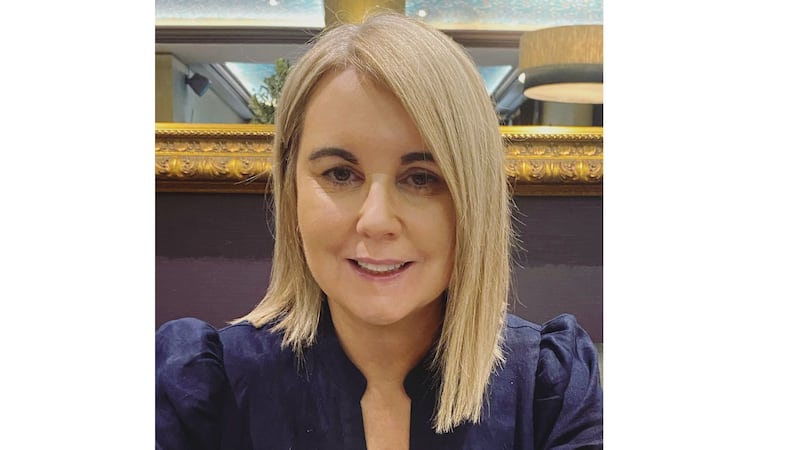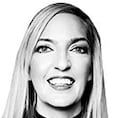Consumer DNA testing can throw up both positive and negative surprises. Experts say anyone who carries out a test should prepare themselves: for finding nothing, for dark family history, or for an emotional ‘tornado’. We meet some people who took the step.
‘It was lovely to know everything. You weren’t always wondering what had happened’
Annamarie Daly (57), who lives in Dublin, says she was born in Sean Ross Abbey, a mother and baby institution in Co Tipperary that closed in 1969.
She grew up thinking she had no biological siblings, but made discoveries after taking a DNA test.
“When my mother went to Sean Ross Abbey she was actually 40 … I presume she was under some social pressure to give me up. She got breast cancer at 42, but then she actually had my full brother [whom Daly did not know about] – she was having an affair with a married man – at 43. And then she was dying at 45, so she brought him over to England where her brothers and sisters were.”
In attempting to find out about her family, Daly had given up on the “paper trail”, she says, “because there was absolutely nothing in terms of the records at Sean Ross Abbey. I had even hired a private investigator at one stage ... I did the DNA [test] because there was nothing else”.
The test connected Daly with cousins and a half-sister on her father’s side, she says. The half-sister, she explains, wasn’t with her father’s wife, but with another woman. It “was an absolute tornado when we found out all of this for the two families”.
Daly made contact with a cousin on her mother’s side whom she met through the DNA site. “He told me I had a brother. And I was thinking ‘that couldn’t be right, because I’d always known my mother died when I was five and that she’d had cancer. It didn’t ever occur to me that she’d have had a baby in the five years in between, as well as having cancer.” The cousin told Daly her brother’s name and gave her some details about where he was working in England.
Daly’s brother already knew of his sister’s existence. “We’re actually full brother and sister, even though our mother had both of us with a married man.”
She and her brother met their father’s other children who are their half-siblings, she says. “The shocking news for them was that we had a half-sister”.
She never got to meet her father. “He died in his 50s,” she says. Daly is glad to know all these things. “I have a great relationship with my brother. We get on very well”. She also got to meet her mother’s sister.
“It was lovely to know everything. You weren’t always wondering what had happened. I knew the whole story. It wasn’t always a pretty story, but at least I knew it, and I got to visit my mother’s grave.”
‘Maybe there are some huge risks with sharing my DNA but I’ve nothing to hide’

Judith Butler lives in Cork. She did a DNA test during a Covid lockdown, prompted by boredom, she admits. “I didn’t really know my dad’s side of the family, so I went looking for that side. And then the most bizzare things cropped up.”
Butler says she discovered a relative who had been left as an abandoned baby in an air-raid shelter in London back in 1943. “I never expected that to happen,” she says.
She also found another cousin in the US, whom she went to visit last year. “We had a lovely reunion in the States and he’s coming to visit us in the spring. Our grandfathers would have been brothers”. And it turned out this cousin had been trying to discover his Irish heritage. “They were actually here back in 2017, looking for family and couldn’t find us because I hadn’t done Ancestry [one of the family tracing companies] by then”.
Butler was also surprised to discover, as a Cork woman, that she had strong link to a Northern county. “It pinpointed that my heritage came from Armagh. Nearly pinpointing out the town. I was thinking ‘I don’t know anybody from Armagh, never mind have somebody in my family’. And it turned out that my grandfather emigrated from Armagh to Manchester and that’s where he met my grandmother”.
She did think afterwards about the fact that she has given away her DNA. “I don’t know, maybe there are some huge risks with sharing my DNA but I’ve nothing to hide, to be honest”. She’s not worried if it throws up some “skeletons”, she says. “Maybe it’s going to find some distant cousin who committed a crime in the past. Fair enough, let’s find them!”
“I’ve met a whole new family. We’ve had a huge family reunion that I was invited to. And then going to the States to meet my cousin – that was a huge eye-opening moment for me.
“I’m all about connection and meeting people and family”.
‘I grew up as an only child, I now have a half-sister’

Sarah O’Toole grew up without a father and believing she was an only child. One day her husband, Andy, saw an advertisement for a DNA site online. “Myself and Andy did the DNA test - spat into a tube, sent it off and thought no more of it”.
She describes what followed as “mind-blowing”.
O’Toole’s mother had gone to America as a nanny in 1984/1985. When she arrived home she discovered that she was pregnant.
O’Toole’s mother had told the man she believed to be the father she was pregnant. “He didn’t want anything to do with it. Therefore I grew up as an only child without a father.”
“That gentleman was Spanish”, O’Toole says, which she says never felt like a natural fit considering her pale complexion.
When the DNA results came through, O’Toole was matched with some people on the site of the company she used. “I messaged the top 10 people in the DNA profile looking for father number one [the Spanish man], and had no luck finding him”, she says.
The pregnancy had been dated incorrectly, she says, and O’Toole’s mother had consequently believed the wrong man to be her baby’s father.
Meanwhile another woman reached out to her asking if she could share her family tree. O’Toole explained to the woman that she didn’t know her father but shared the details of her mother’s stay in the US in the 1980s, and explained she was looking for a man in his 70s. The woman spotted O’Toole was also linked with her uncle and cousin’s DNA.
O’Toole asked her mother if she had dated any other men while she was in America. “She said ‘there was one other guy … Trent Nebeker’”. The relationship happened after Nebeker, who already had a daughter, had divorced.
“I wrote back to [the person] who I now know is my cousin, saying ‘is your uncle’s name Trent?’ She said ‘yes it is. Trent also has a daughter’.” O’Toole then explained to her mother what had happened.
“She burst out crying, because obviously it’s very emotional. I was very upset in the sense my mam raised me as an only child which was very hard on her – all these years she could have had support”. O’Toole’s new-found cousin contacted Trent’s daughter, O’Toole’s half-sister, Kelly, to let her know what they had discovered. Private lab tests carried out in the US confirmed everything, she says.
[ Emer McLysaght: I did a DNA test and guess what? I’m as Irish as a bog bodyOpens in new window ]
O’Toole has been to her father’s home in the US and met her new family who have welcomed her “with open arms”. “They’re all tall,” says O’Toole, who is 5ft11in. “Loads of different traits coming out that I now understand.” Her father and half-sister have also met her two children – their only grandchildren and nephews.
“It’s taken me until now to process it all,” she says. “I grew up as an only child, I now have a half-sister,” and “14 other first cousins”.
- Sign up for push alerts and have the best news, analysis and comment delivered directly to your phone
- Join The Irish Times on WhatsApp and stay up to date
- Listen to our Inside Politics podcast for the best political chat and analysis





















